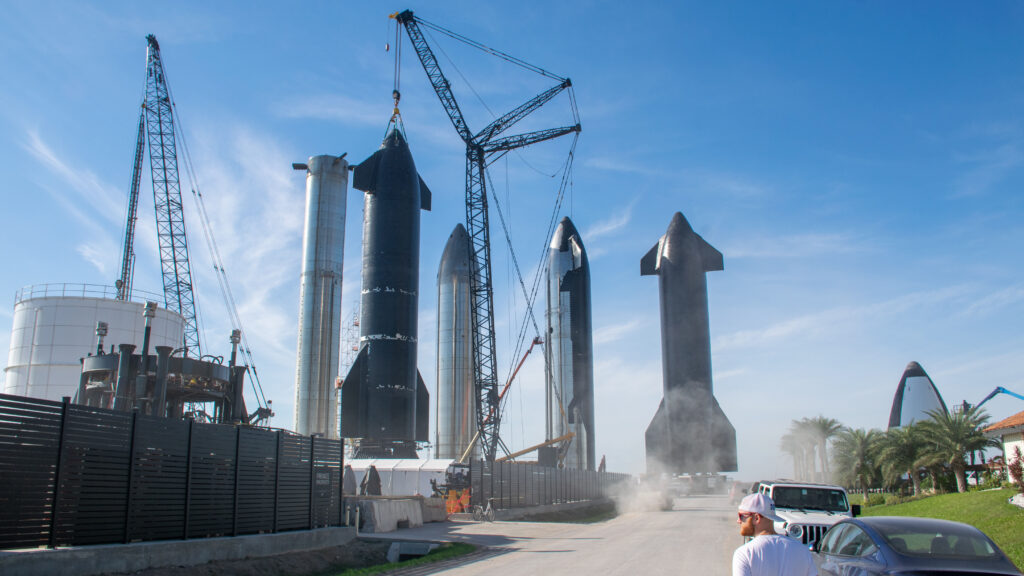By Peter Pavarini

Before Southern California, Washington and Texas became home to the modern aerospace industry, Long Island, New York was already well-established as the “Cradle of Aviation”[i]. Historically speaking, the Age of Flight is said to have begun in Dayton, Ohio[ii], but by the end of the 20th century’s first decade, most of America’s airplane experimentation and production was concentrated on the Hempstead Plains of Nassau County[iii]. This flat, open greenspace just outside America’s largest city proved to be the perfect place for perfecting the technology of flight. Indeed, in 1910, Belmont Park, already known for its thoroughbred racing, served as the site of the first international air show. Thousands of spectators came to see the world’s top aviators perform daredevil feats in their latest flying machines.
The Rise and Fall of Aerospace Manufacturing
In 1911, using a Wright Brothers plane, Cal Rodgers took off from Long Island on the first transcontinental flight to California – a trip that ended up taking 49 days (with plenty of stops). During World War I, the Hempstead Plains served as a major base for training as many as 3,500 Army pilots. By 1918, aircraft manufacturers had opened 20 new factories on Long Island, launching what became known as the “Golden Age of Aviation”. By far the most famous event of that time was Charles Lindberg’s historic transatlantic flight from Roosevelt Field, Long Island to Paris, France in 1927. By the 1930’s, Roosevelt Field was the country’s busiest civilian airfield hosting over 150 aviation companies. During World War II, over 100,000 people worked in Long Island manufacturing facilities building the fighters and bombers[iv] that were key to our nation’s victories over Germany and Japan.
When I grew up on Long Island in the 1960’s, its aerospace industry had waned somewhat, falling into second place behind Southern California. Even then, companies like Grumman, Republic and Fairchild Hiller remained major employers in my part of Nassau County. Indeed, I recall proudly saying that one of my uncles was working on the Lunar Module for the Apollo Program, the only manned spacecraft ever to land on the Moon. Those landers were built entirely of American made parts at Grumman’s Bethpage Plant No. 5. Like other kids of my generation, I often dreamed about the future of space exploration and assumed that by 2025 we would have progressed more than we have.
Then what happened? After a few visits to the Moon, America suffered what has been termed the “Apollo hangover”. Competing national priorities and an economy that for some reason could no longer devote up to 5% of its GDP to space exploration forced aerospace companies to lay off thousands of workers and shutter many of Long Island’s manufacturing facilities. Grumman was still a major defense contractor but became a shadow of its former self.
Aerospace wasn’t the only manufacturing sector to experience decline. All forms of manufacturing went from being 25% of the American economy in 1965 to 10% in 2025[v]. During that time, not only had 60% of our production moved offshore, but Americans began to see manufacturing as a dirty, antiquated business we’d rather have low-cost countries do for us. Most tellingly, younger workers no longer considered manufacturing an attractive career choice compared with service-sector jobs. Because of those trends, the US now faces a severe labor deficit in many technical trades and lacks much of the basic knowhow essential to the manufacturing process.
A Renaissance in Rocket Building
Despite the aerospace industry’s decline in the late 20th century, American rocket manufacturing has been booming lately. Today, as many as 25 US facilities are actively engaged in making rockets or rocket components. These do not include the general aerospace plants which produce commercial or military aircraft as opposed to space launch vehicles. To be considered a true “rocket factory”, a plant must be primarily engaged in the assembly or staging of rockets capable of orbital or suborbital flight. Approximately 12 such facilities are now operated by NASA or established companies like SpaceX, Blue Origin and a handful of legacy companies like Boeing and Northrup Grumman. The remaining ones are startups like Stoke Space or rocket engine companies like L3Harris. At present, SpaceX represents 61% of all space launch vehicles being built.
You don’t need to be a science fiction junkie to recognize the importance of this turnaround. After NASA ceded its former monopoly to the private sector, America’s entrepreneurial spirit took over. A major investment in R & D has resulted in the development of reusable launch vehicles, electron and neutron rockets, photon satellites, and the first generation of rockets not dependent on chemical combustion. Most impressively, commercial demand for insertion into Earth orbit will account for more than 300 launches in 2025, most of them from the US. Compare that with only 121 launch attempts in 1990, only 28 of which originated in the US.
To some extent, all forms of US manufacturing have been on a rebound since COVID exposed the nation’s supply chain vulnerabilities. Federal subsidies for semi-conductors, corporate investments and tax reforms have furthered this “reshoring” effort. However, without sound fiscal, energy, environmental and educational policies it remains uncertain whether the US will reclaim its former status as the world’s foremost manufacturing power.
Why Manufacturing is Vital to the National Economy
Few dispute the importance of manufacturing in the US economy. Economists say that manufacturing drives growth in other sectors of the economy[vi] by creating high-wage jobs[vii], generating tax revenue and producing goods critical to foreign trade and shrinking the trade deficit. However, public perception has yet to catch up with the reality of this high-tech, dynamic industry. According to a 2023 Deloitte study over 2 million manufacturing jobs are being left unfilled because of a lack of skilled workers.
By investing heavily in R & D to create new products and improve production processes, manufacturers are the primary driver of innovation. Just as the American space program of the 20th century catapulted the country ahead of its foreign competitors in computer technology, alternative materials and countless new products, US manufacturers can do that again. Manufacturing can also help re-build America’s middle class which has been in a decline since the 1970s. This will reduce unemployment and poverty especially in those parts of the country which suffered the most when factories closed in the past.
Accelerating This Manufacturing Turnaround
To accelerate this turnaround, industry leaders need to take deliberate steps to refurbish manufacturing’s image and economic foundation. A recent Forbes article[viii] outlined seven ways to do this:
- Promote the modern manufacturing story
- Invest in workforce development
- Embrace diversity and inclusion
- Leverage technology
- Advocate for policy support
- Strengthen supply chains
- Engage communities
There’s no better example of how to put this turnaround plan into action than SpaceX’s Starbase facility in Boca Chica, Texas. Opened in 2016 on a desolate stretch of the Gulf Coast, Starbase has become the company’s primary facility for the development, manufacturing, testing and launch of its Starship spacecraft and Super Heavy booster rockets. Boca Chica now serves as SpaceX’s headquarters and the hub for its development of fully reusable rocket technology aimed at planting a human settlement on Mars. Recently incorporated as a city, Starbase is truly a 21st century “factory town” which includes not only a full suite of production facilities, launch pads and support infrastructure, but also employee housing and retail businesses. Serving NASA’s Artemis lunar landing program beginning in 2026, other federal agencies like the Department of War and commercial applications like Starlink, Starbase expects to launch more than 100 rockets in 2027. SpaceX founder Elon Musk sees Starbase as “humanity’s gateway to Mars” with uncrewed precursor missions beginning as soon as 2026.
Next Up: Manufacturing in Space
As exciting as a new rocket factory like Starbase is, the future of manufacturing may not take place solely on Earth but also in space. Scientists have long known that the low gravity environment of Earth’s orbit permits the production of higher-quality products than is possible on Earth. As early as 1973, astronauts on NASA’s Skylab space station began experimenting with making crystals, a crucial part of electronic circuitry. Since then, other efforts to manufacture products in space have rapidly advanced to the point that several companies are now designing machinery that can be used in the orbital production of medicines, semiconductors and more. Some say that global space manufacturing could grow to be a $100 billion industry by 2035.[ix]
Because reusable rockets like SpaceX’s Falcon 9 have dramatically reduced the cost of accessing space, the prospect of orbital manufacturing seems much closer than ever. Beyond that, a few companies have set their sights on using the abundant natural resources of outer space, such as the high-value metallic content of asteroids, to unlock further the potential of space manufacturing.
Building a new economy in space is no longer speculative science fiction. Rather than envy the success of prior generations, young people today should enthusiastically welcome the opening of every new rocket factory.
[i] The Cradle of Aviation Museum in Garden City, N.Y., Long Island’s air and space museum, chronicles the history of flight from the first balloon flight in 1873 to the last Lunar Module built for the Apollo 19 mission that was cancelled.
[ii] Or Kitty Hawk, North Carolina. The two states continue to dispute this point.
[iii] The Hempstead Plains were the only natural prairie east of the Allegheny Mountains. Generally treeless, the sandy grassland was located on the glacial outwash of the last Ice Age.
[iv] Grumman became known for its Long Island made Navy fighters like the Wildcat, Hellcat and Avenger. Republic built over 15,000 P-47 Thunderbolts, the Army’s mainstay fighter in Europe. Other Long Island companies contributing to the war effort were Sperry, Brewster, Rander and Columbia.
[v] Based on World Bank data.
[vi] For every dollar spend on manufacturing, an addition $2.69 is created in the non-manufacturing sectors. This multiplier effect benefits business services, logistics and retail, accounting for a third of US GDP.
[vii] In 2024, the average annual earnings for a manufacturing employee were over $106,000.
[viii] Laurie Harbour & Scott Walton, “The Importance of Manufacturing to the U.S. Economy”, Forbes, January 16, 2025.
[ix] Jonathan O’Callaghan, “The Future of Manufacturing Might Be in Space”, Business, May 6, 2025.

Be First to Comment